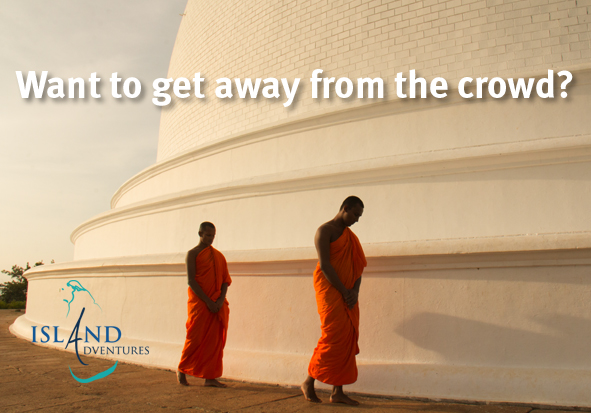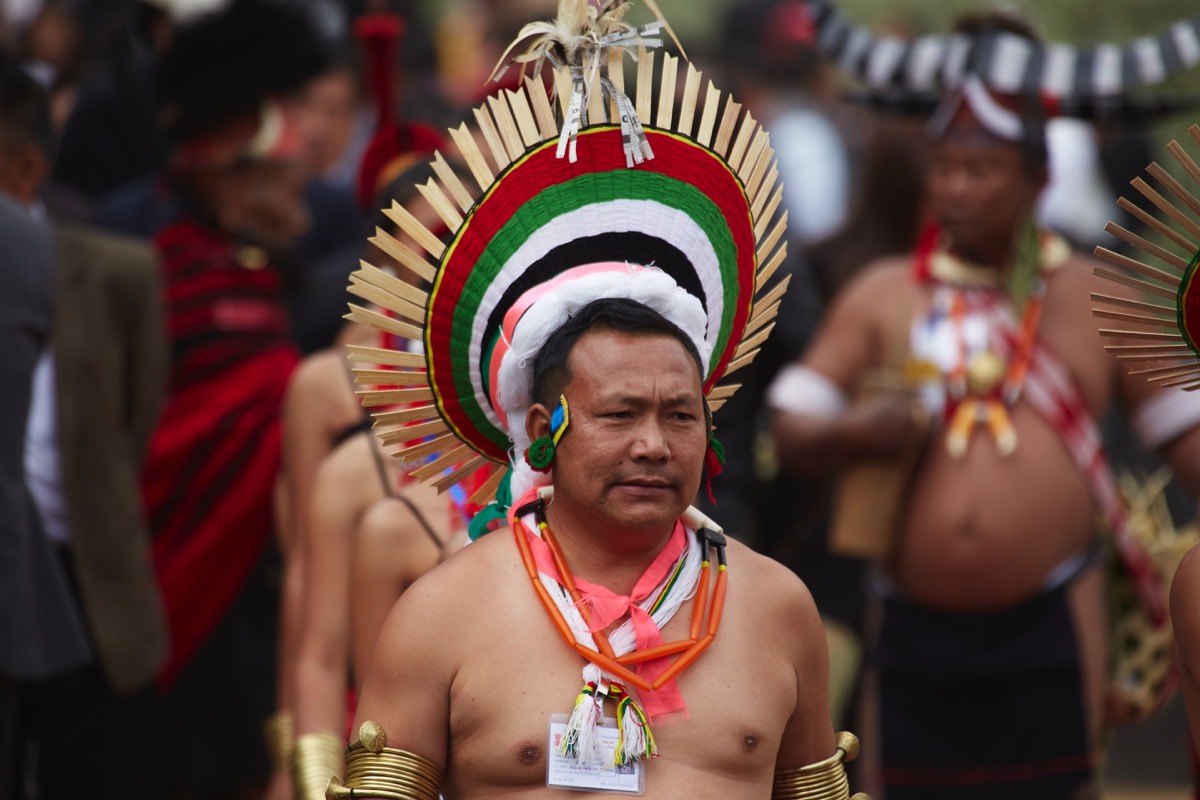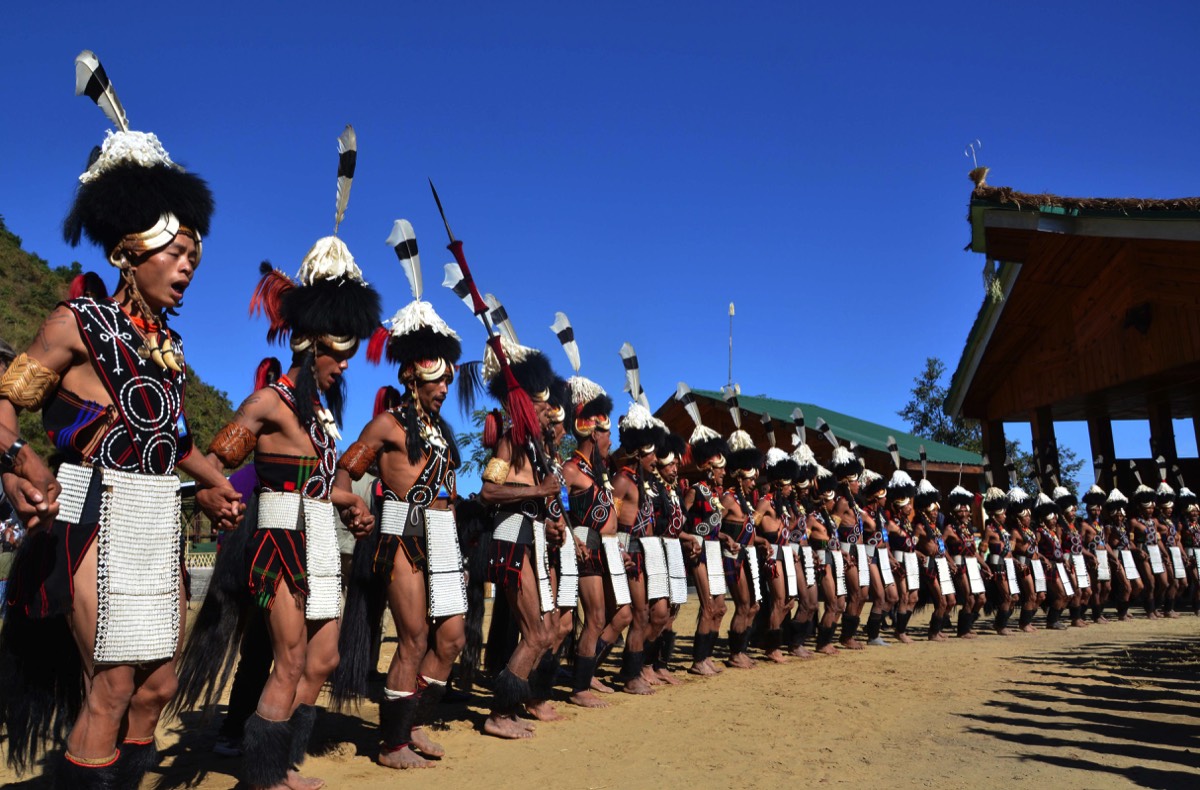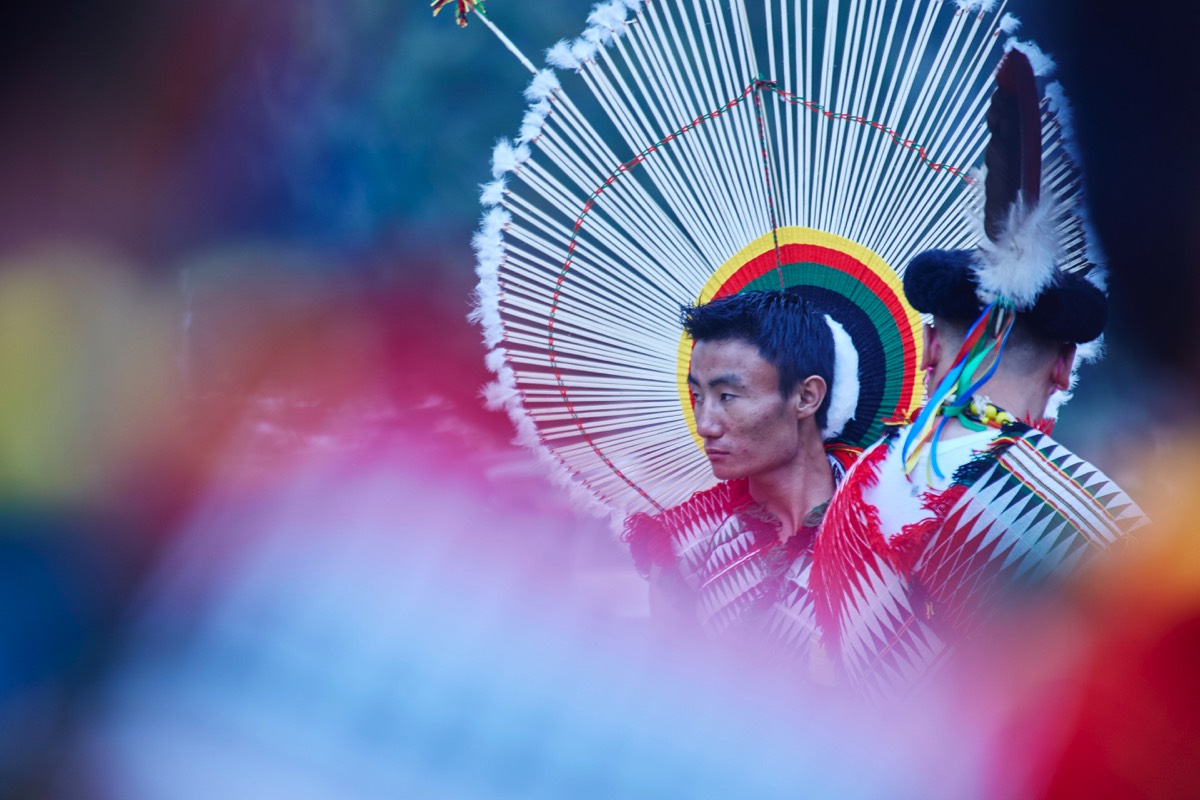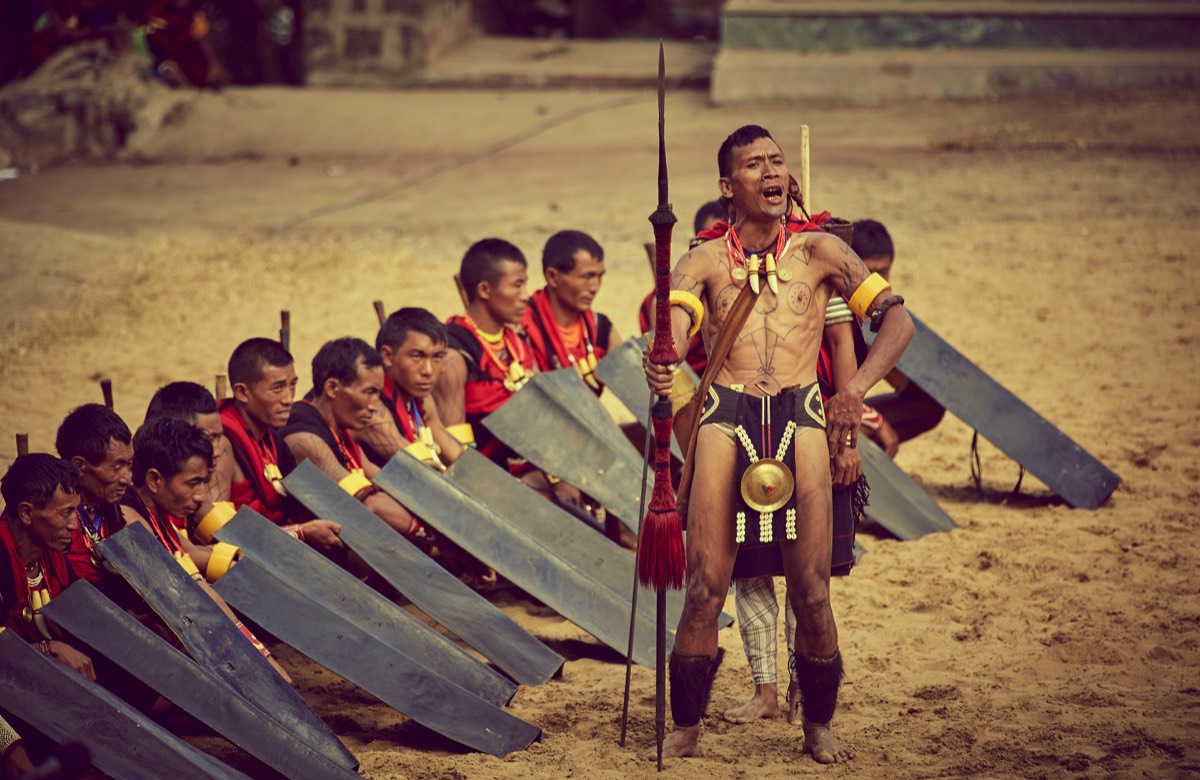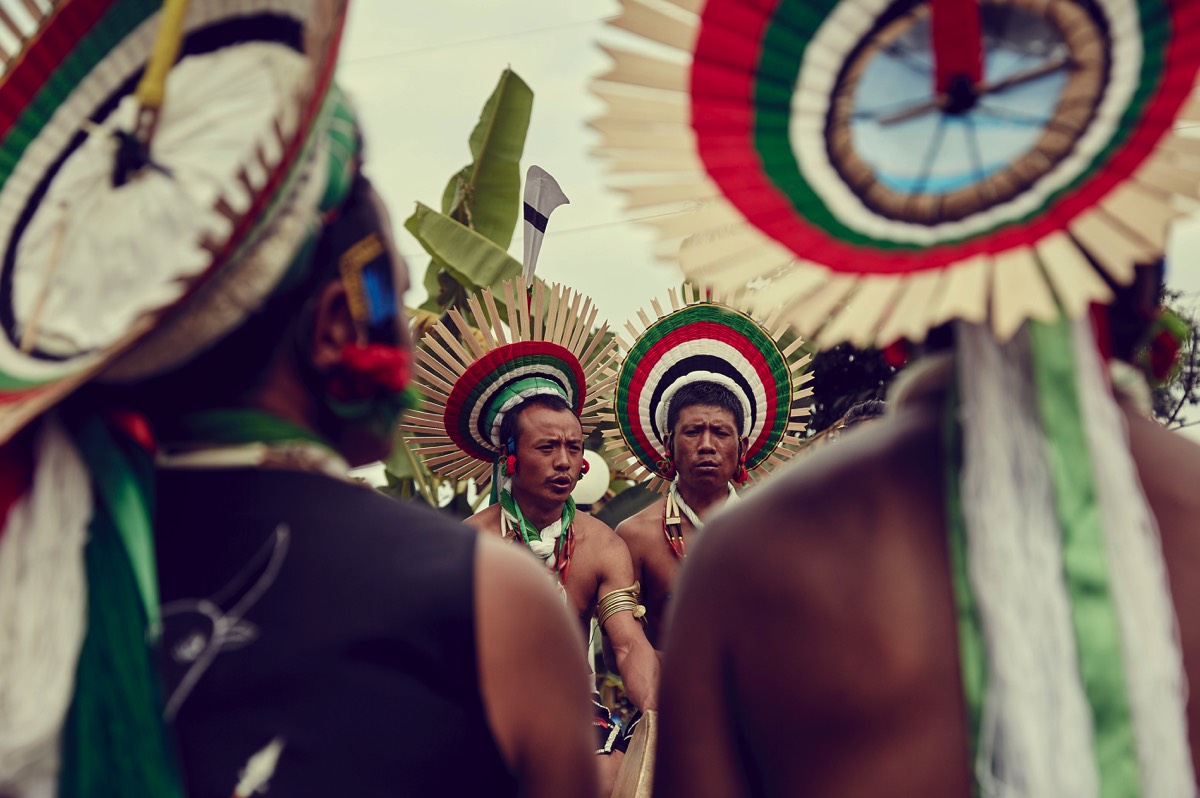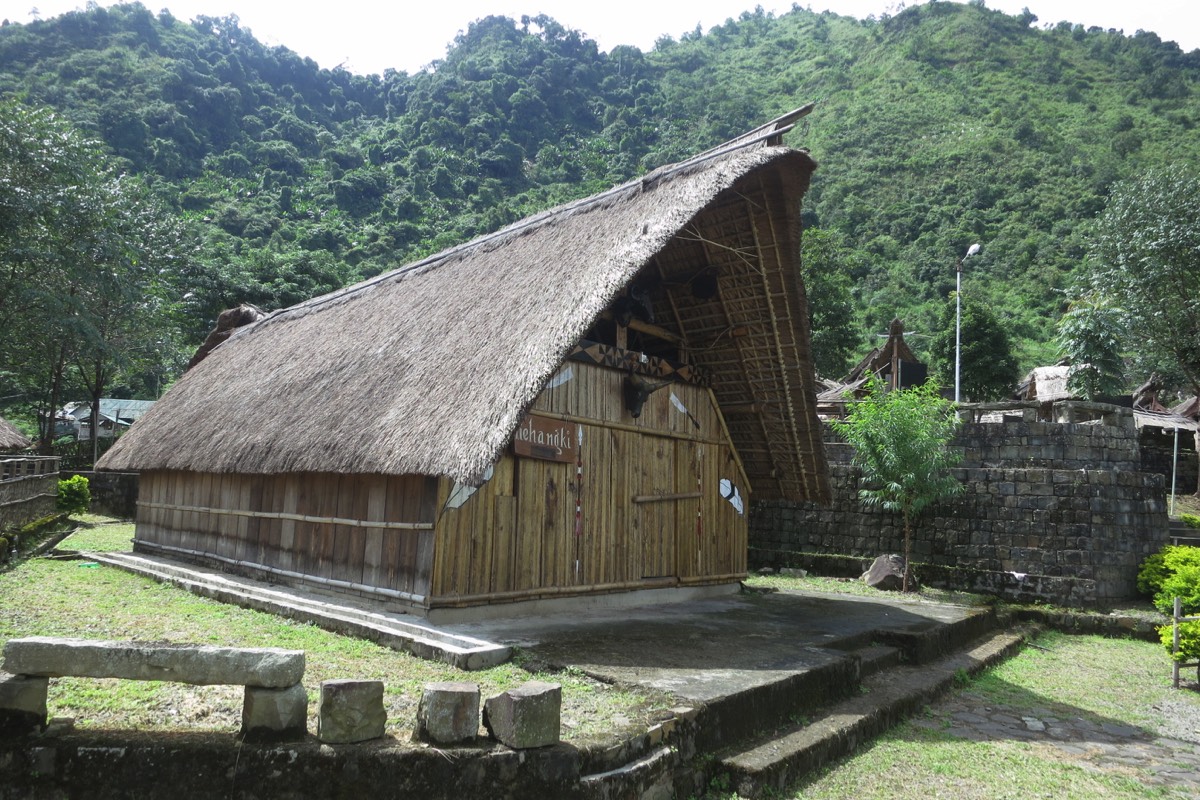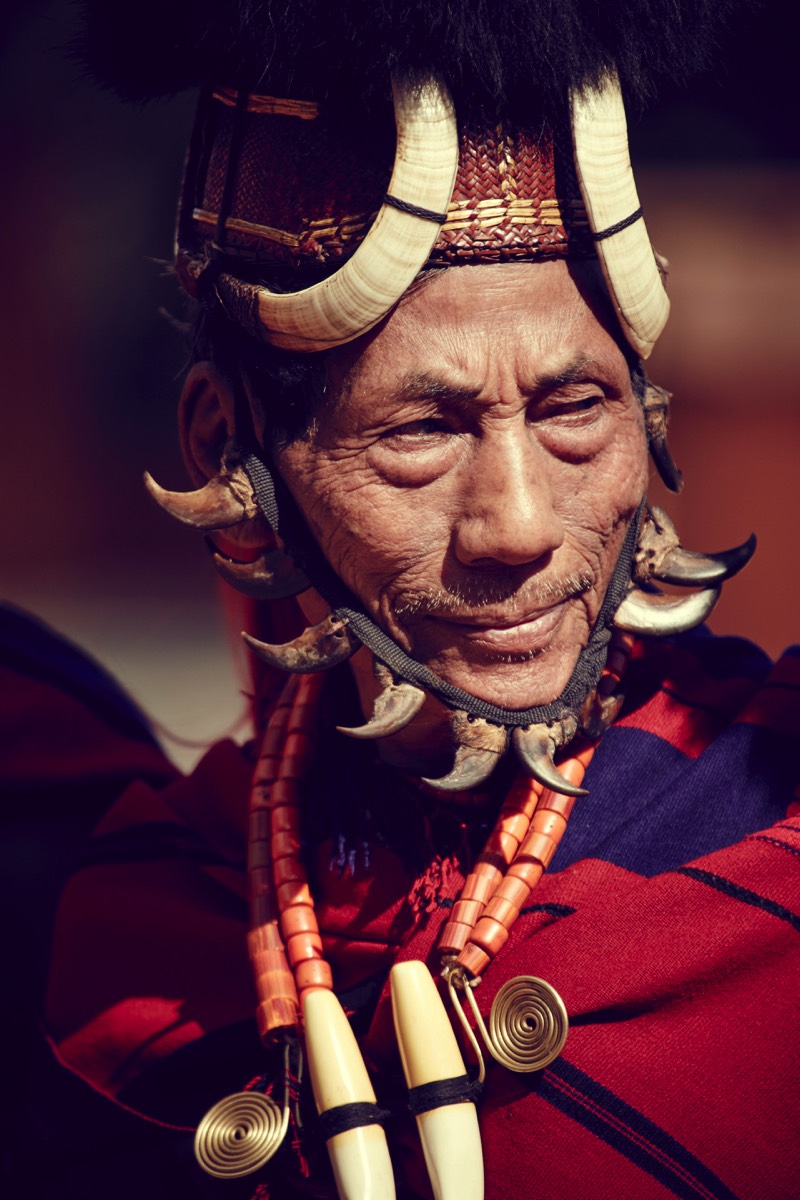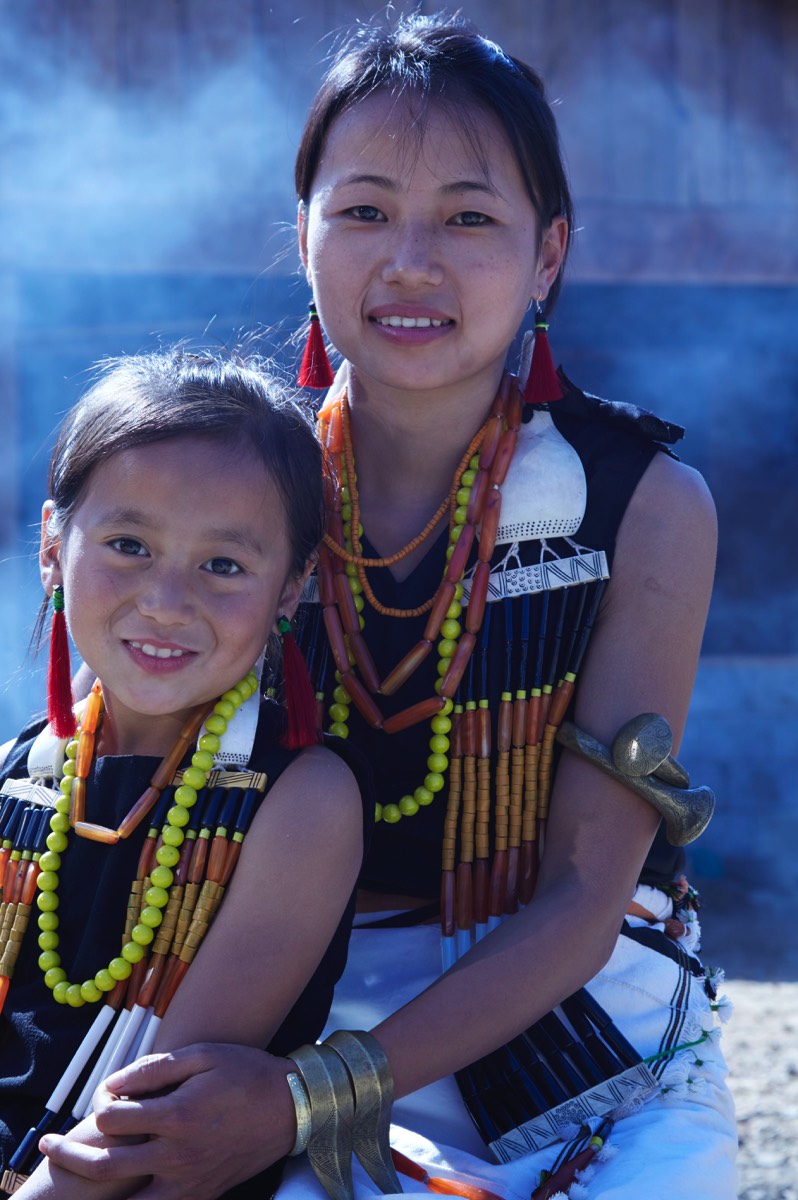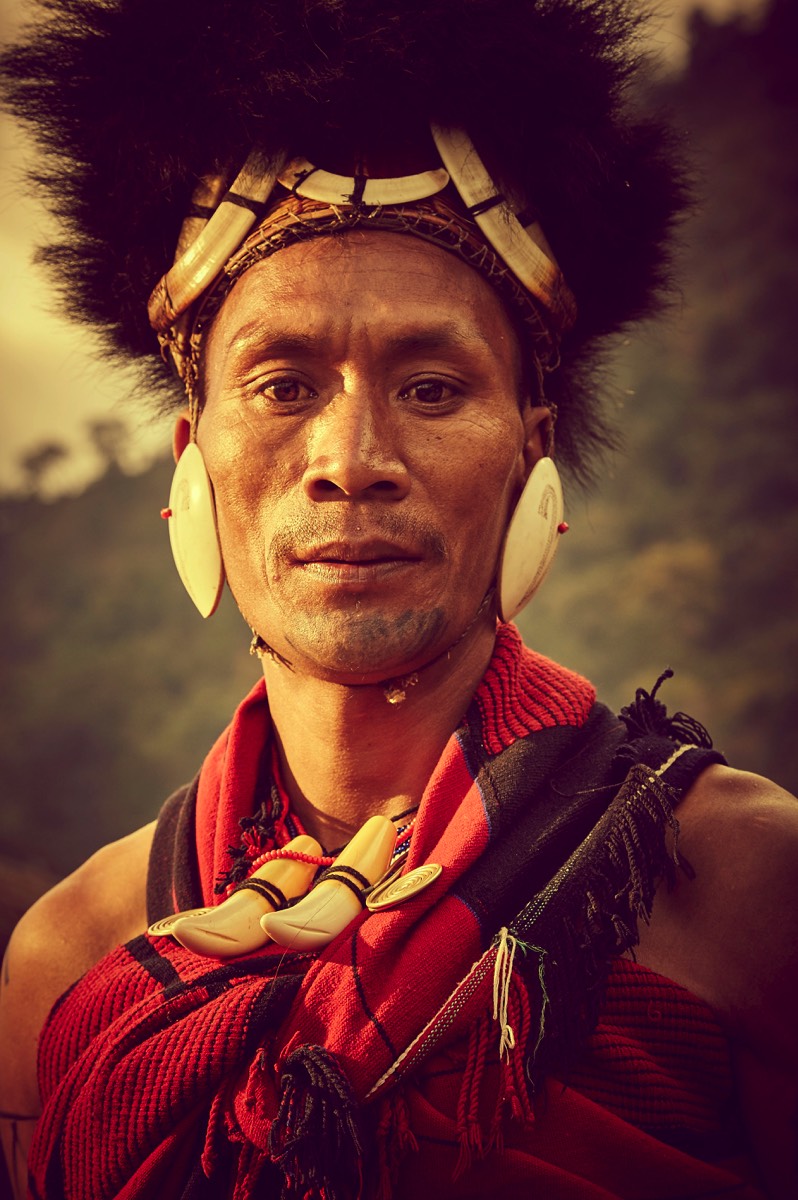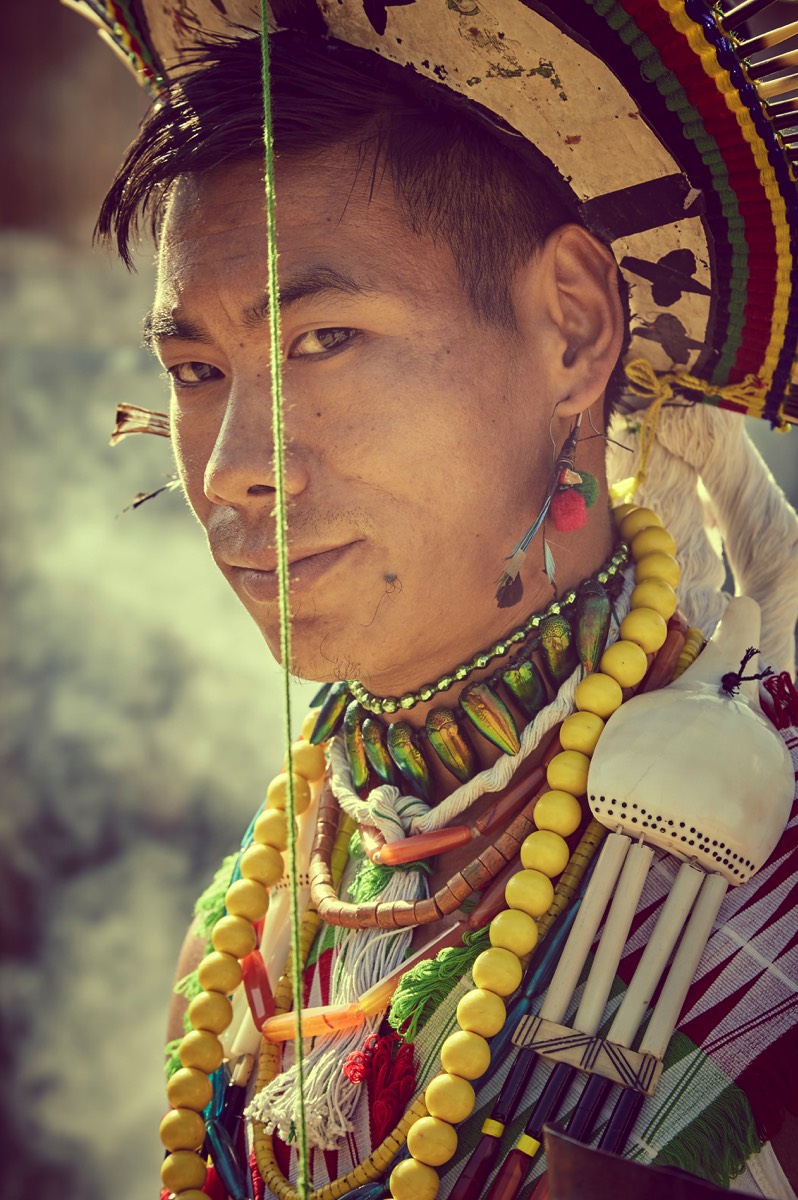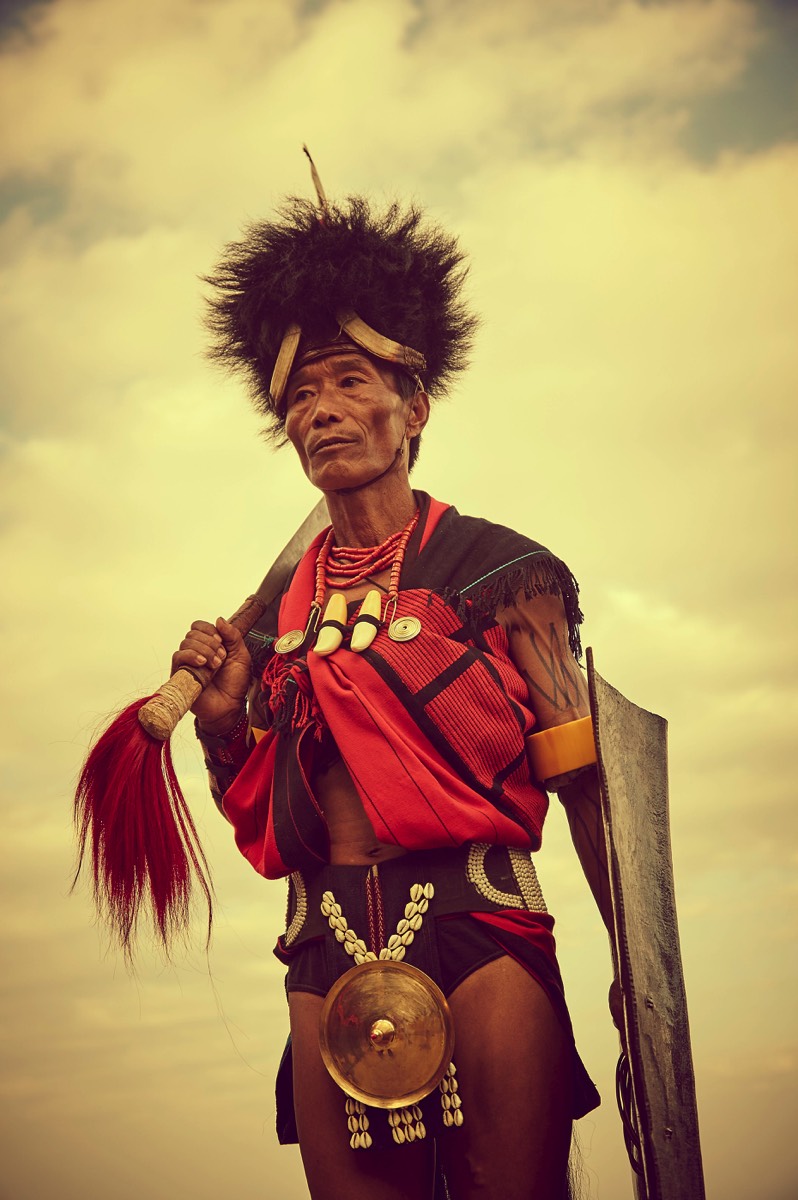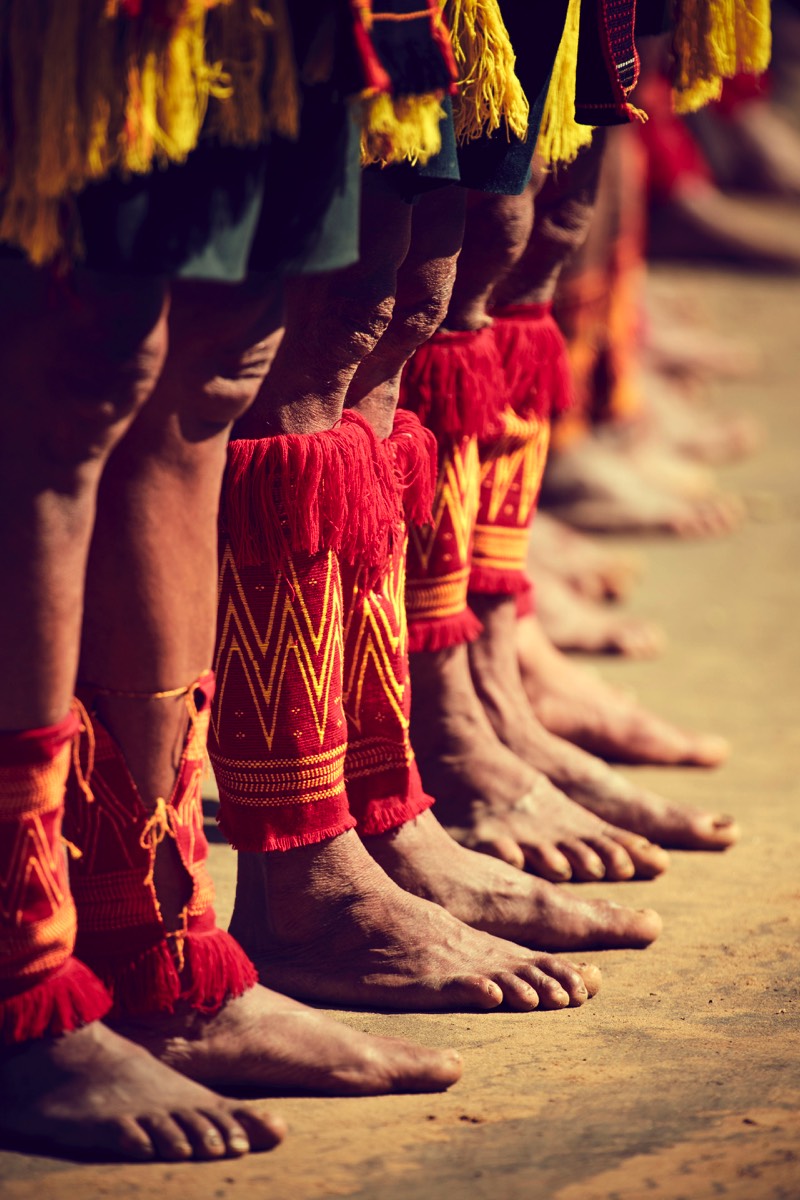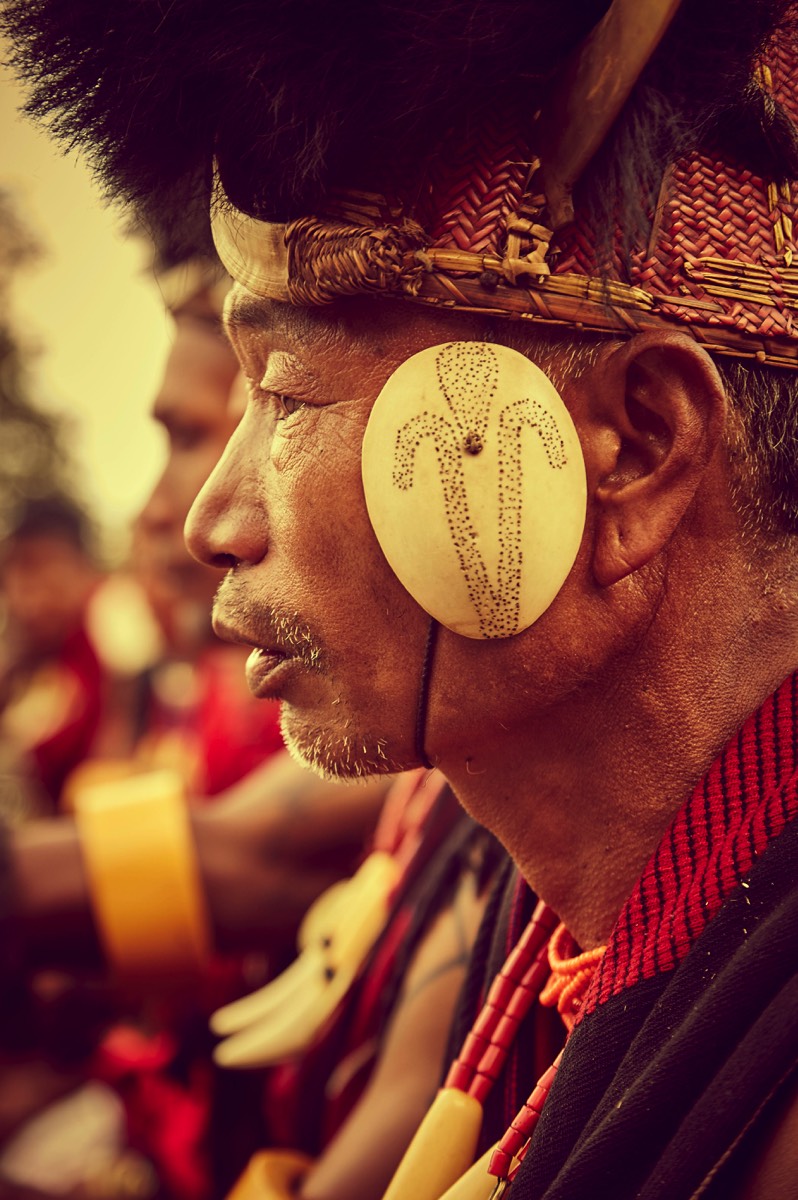TRAVEL
Surrey’s Premier Lifestyle Magazine
India’s wild east
Nagaland’s dazzling primeval beauty can be found right on the edge of the India–Myanmar border. It’s an otherworldly place where until recently some 16 headhunting Naga tribes valiantly fought off any intruders. Times, of course, change and today it’s a shadow of its once savage self with much of the south fairly developed. Subhasish Chakraborty seeks and finds a different travel experience.
All Photos copyright: TUTC
All Photos copyright: TUTC
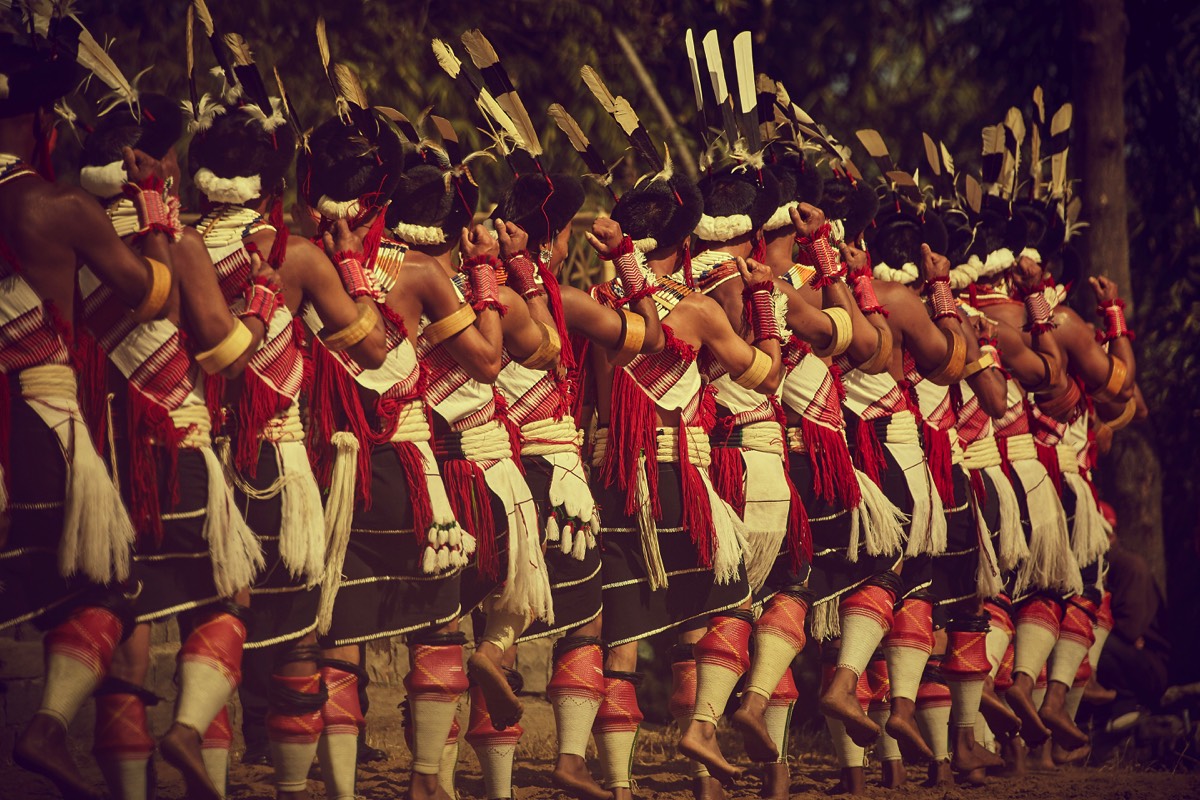
A team of anthropologists from a Paris-based French NGO wanted to visit the northeastern Indian state of Nagaland. They requested a French-speaking guide, so since I knew the lingo as well as the geography, I found myself entrusted with overall responsibility for the tour.
Arriving at Nagaland’s only airport in Dimapur, we were received by representatives of the Touphema Tourist Village, our base for a weeklong sojourn. The tourist village was an enchanting and bewitchingly beautiful 100 kilometre drive through hills and valleys. This village, we were informed, showcases the very best of Nagaland’s tribal hospitality, and indeed we weren’t disappointed as a traditional Nagamese welcome awaited us.
We’d chosen this village to appreciate the tribal nuances that exist in the state. In the villages, hutments are not merely meant to provide shelter: they signify social status, relevant adjustments to local climatic conditions. They are built with a judicious use of locally available materials and age-old cultural traditions all interwoven in a unique blend.
The entire complex is spread over the highest elevations of the terrain. There was an exclusive reception centre with even a well-stocked pub! The clustered Naga huts were well dispersed and the community lobby, kitchen and dining room signify their importance being located on the higher levels of the village. The kitchen is the central meeting place for guests of the village with comfortable seating arrangements and was spacious enough to store foodstuffs. The intricately designed goblets available for use are works of art and we were offered the locally brewed liquor.
As the sun set, our group was entertained by a high-octane cultural performance by locals in traditional dress, complete with bows and arrows. My distinguished French charges were suitably astonished, having never seen such a raw display of tribal culture.
Arriving at Nagaland’s only airport in Dimapur, we were received by representatives of the Touphema Tourist Village, our base for a weeklong sojourn. The tourist village was an enchanting and bewitchingly beautiful 100 kilometre drive through hills and valleys. This village, we were informed, showcases the very best of Nagaland’s tribal hospitality, and indeed we weren’t disappointed as a traditional Nagamese welcome awaited us.
We’d chosen this village to appreciate the tribal nuances that exist in the state. In the villages, hutments are not merely meant to provide shelter: they signify social status, relevant adjustments to local climatic conditions. They are built with a judicious use of locally available materials and age-old cultural traditions all interwoven in a unique blend.
The entire complex is spread over the highest elevations of the terrain. There was an exclusive reception centre with even a well-stocked pub! The clustered Naga huts were well dispersed and the community lobby, kitchen and dining room signify their importance being located on the higher levels of the village. The kitchen is the central meeting place for guests of the village with comfortable seating arrangements and was spacious enough to store foodstuffs. The intricately designed goblets available for use are works of art and we were offered the locally brewed liquor.
As the sun set, our group was entertained by a high-octane cultural performance by locals in traditional dress, complete with bows and arrows. My distinguished French charges were suitably astonished, having never seen such a raw display of tribal culture.
LOADING
As darkness enclosed the village, we were urged to explore the huts. To our amazement, we realised they were theme based and the bedrooms were luxurious, with attached toilet and geyser. Solar battery powered lighting provided the biggest surprise and, in this remote corner of India, was something completely unexpected.
Touphema Tourist Village is one of the best places to experience the tribal culture of Nagaland: the innovative way in which the native Angami Naga culture is portrayed in this dreamlike village is stunning.
Kohima, the state capital, is located 74 kilometres away from Dimapur. The name ‘Kohima’ is derived from the Angami tribal word ‘Kewhira’ on whose land the township was established.
Kohima was designated as the headquarters of the Naga Hills by the then chief commissioner of undivided Assam, Colonel Keating, largely due to its strategic importance. This nondescript Naga town was the centre of global attention in April 1944 during the Second World War when the Japanese Army captured the town for 64 days. Today there is a war memorial dedicated to over 4,000 British and Indian soldiers who died there. In the Battle of Kohima, two VCs were won, a battle described as the Stalingrad of the east. A visit to the war memorial is a must.
Located 1,450 metres above sea level, the climate in Kohima is very comfortable. It’s a year round destination and offers a nice getaway from the humdrum of city life. A few of my French wards were keen trekkers so couldn’t resist the temptation to walk in the mountainous areas surrounding Kohima. The rest of us went for something less strenuous and visited buzzing bazaars, all a hive of activity and colour. Shops are stacked with hi-tech imported goods ranging from cameras to the latest laptop.
Kohima has a cosmopolitan air and is an amalgam of diverse Naga tribes such as Ao, Angami and Rengma that seem to have adapted to live in harmony with the modern world. With high speed internet and mobile phones, Kohima is on the verge of rapid economic growth, with plans to develop trade and commerce with southeast Asia.
An enduring landmark is the magnificent Catholic cathedral, ideally located on the impressive looking Aradurah Hill. The façade is notable for its geometrical design and it’s easily the largest cathedral of northeast India and a key place for christians.
Touphema Tourist Village is one of the best places to experience the tribal culture of Nagaland: the innovative way in which the native Angami Naga culture is portrayed in this dreamlike village is stunning.
Kohima, the state capital, is located 74 kilometres away from Dimapur. The name ‘Kohima’ is derived from the Angami tribal word ‘Kewhira’ on whose land the township was established.
Kohima was designated as the headquarters of the Naga Hills by the then chief commissioner of undivided Assam, Colonel Keating, largely due to its strategic importance. This nondescript Naga town was the centre of global attention in April 1944 during the Second World War when the Japanese Army captured the town for 64 days. Today there is a war memorial dedicated to over 4,000 British and Indian soldiers who died there. In the Battle of Kohima, two VCs were won, a battle described as the Stalingrad of the east. A visit to the war memorial is a must.
Located 1,450 metres above sea level, the climate in Kohima is very comfortable. It’s a year round destination and offers a nice getaway from the humdrum of city life. A few of my French wards were keen trekkers so couldn’t resist the temptation to walk in the mountainous areas surrounding Kohima. The rest of us went for something less strenuous and visited buzzing bazaars, all a hive of activity and colour. Shops are stacked with hi-tech imported goods ranging from cameras to the latest laptop.
Kohima has a cosmopolitan air and is an amalgam of diverse Naga tribes such as Ao, Angami and Rengma that seem to have adapted to live in harmony with the modern world. With high speed internet and mobile phones, Kohima is on the verge of rapid economic growth, with plans to develop trade and commerce with southeast Asia.
An enduring landmark is the magnificent Catholic cathedral, ideally located on the impressive looking Aradurah Hill. The façade is notable for its geometrical design and it’s easily the largest cathedral of northeast India and a key place for christians.
LOADING
Nagaland fact file:
Getting there: The only airport in Nagaland is located at Dimapur. There are regular flights to Dimapur from Guwahati and Kolkata, which in turn are well connected by flights from other parts of India and internationally. From Guwahati to Kohima, the distance can be covered in about five to six hours and the drive is beautiful as one passes by quaint tribal villages, stretches of tropical forest, undulating hills and good wayside amenities. Note that a number of insurgent groups remain active in the state and visitors should check the political situation before travelling. It is very important that foreign guests retain at least five photocopies of their passport and Indian visa before entering Nagaland.Accommodation: If one desires to savour the quintessential Naga tribal hospitality, the best way is to seek rural accommodation located on the outskirts of Kohima. Places such as Khonoma Green Village and Touphema Tourist Village are much preferred by discerning guests.
For visitors who intend to participate in the annual Hornbill Festival, www.hornbillfestival.com, one of the most outstanding luxury camp accommodations is Kohima Camp: www.kohimacampnagaland.com.
For further information, contact www.tourismnagaland.com and info@tourismnagaland.com.
As word gets out, numbers of tourists from western countries are increasing, as well as those from mainland India, who readily chat with locals over a sip or two of the locally brewed wine.
In spite of increasing modernity, Nagaland gives the outward impression of being in a time warp, insulated as it were from the rapid advancement of science and technology. The region has retained its sanity, which augurs well for the future.
Since we had visited with the main purpose of exploring anthropological traits of exotic Naga tribes, the Department of Tourism prepared an itinerary for our group that covered the Mokokchung – Wokha – Zunheboto tourist circuit with a day’s halt at each of these places where tribal wizardry is still in evidence.
In these remote villages, the government of Nagaland has devised a novel method of promoting ecotourism where local tribes generate their own income through the community holding of tourism assets.
At each of these locations, we found an exclusive ‘village tourism board’ run and administered by the villagers themselves. In order to maintain a rewarding traveller experience, the government routinely conducts workshops and seminars for villagers.
Mokokchung is the domain of the Ao Nagas. We were told that the smallest social unit of the Ao Naga is the family. After marriage, the bride and groom leave their respective families and establish a new household. If a younger member of the family quarrels with a senior, it is believed to be a bad omen, not only for the family but also for the village.
Ao Nagas also have clans and are patriarchal and exogamous. The ‘Morung’, or bachelor’s dormitory, plays a vital role in the social life of the village. Most Morungs are fine works of craftsmanship: they serve as both a guardhouse and clubhouse. Women are forbidden to enter a Morung, with young boys admitted every three years for practical training in order to become a ‘perfect man’. There is no chieftain and each village is run on democratic principles: every individual has an opportunity to take part in the administration of the village.
Our trips to Wokha and Zunheboto revealed that each Naga tribe has a dialect and culture of its own. The language is basically ‘Tibeto Burman’ and our group found the local tribes to be very hospitable as they attach great importance to friendship.
It’s a good idea to time a visit to coincide with the annual Hornbill Festival, held every December in the charming village of Kisama. The theme of the festival is very apt – ‘Window to Nagaland’ – and this particular festival is the largest, but there are many others held year round.
Mysticism and magic abound here, heightened by the remoteness and natural geographical isolation. There are opportunities to savour ancient practices and bond with some most fascinating tribes – surely enough to invigorate and intrigue even the most travelled of us?
Stepping inside a quintessential Naga village, visitors are bound by its tribal code of honour as a result of their intrusion. The resulting tribal hospitality extended is something to which the modern traveller is unaccustomed. It’s the element of unacquainted tribal generosity that awaits discovery.
In spite of increasing modernity, Nagaland gives the outward impression of being in a time warp, insulated as it were from the rapid advancement of science and technology. The region has retained its sanity, which augurs well for the future.
Since we had visited with the main purpose of exploring anthropological traits of exotic Naga tribes, the Department of Tourism prepared an itinerary for our group that covered the Mokokchung – Wokha – Zunheboto tourist circuit with a day’s halt at each of these places where tribal wizardry is still in evidence.
In these remote villages, the government of Nagaland has devised a novel method of promoting ecotourism where local tribes generate their own income through the community holding of tourism assets.
At each of these locations, we found an exclusive ‘village tourism board’ run and administered by the villagers themselves. In order to maintain a rewarding traveller experience, the government routinely conducts workshops and seminars for villagers.
Mokokchung is the domain of the Ao Nagas. We were told that the smallest social unit of the Ao Naga is the family. After marriage, the bride and groom leave their respective families and establish a new household. If a younger member of the family quarrels with a senior, it is believed to be a bad omen, not only for the family but also for the village.
Ao Nagas also have clans and are patriarchal and exogamous. The ‘Morung’, or bachelor’s dormitory, plays a vital role in the social life of the village. Most Morungs are fine works of craftsmanship: they serve as both a guardhouse and clubhouse. Women are forbidden to enter a Morung, with young boys admitted every three years for practical training in order to become a ‘perfect man’. There is no chieftain and each village is run on democratic principles: every individual has an opportunity to take part in the administration of the village.
Our trips to Wokha and Zunheboto revealed that each Naga tribe has a dialect and culture of its own. The language is basically ‘Tibeto Burman’ and our group found the local tribes to be very hospitable as they attach great importance to friendship.
It’s a good idea to time a visit to coincide with the annual Hornbill Festival, held every December in the charming village of Kisama. The theme of the festival is very apt – ‘Window to Nagaland’ – and this particular festival is the largest, but there are many others held year round.
Mysticism and magic abound here, heightened by the remoteness and natural geographical isolation. There are opportunities to savour ancient practices and bond with some most fascinating tribes – surely enough to invigorate and intrigue even the most travelled of us?
Stepping inside a quintessential Naga village, visitors are bound by its tribal code of honour as a result of their intrusion. The resulting tribal hospitality extended is something to which the modern traveller is unaccustomed. It’s the element of unacquainted tribal generosity that awaits discovery.
Our trips to Wokha and Zunheboto revealed that each Naga tribe has a dialect and culture of its own. The language is basically ‘Tibeto Burman’ and our group found the local tribes to be very hospitable as they attach great importance to friendship.

